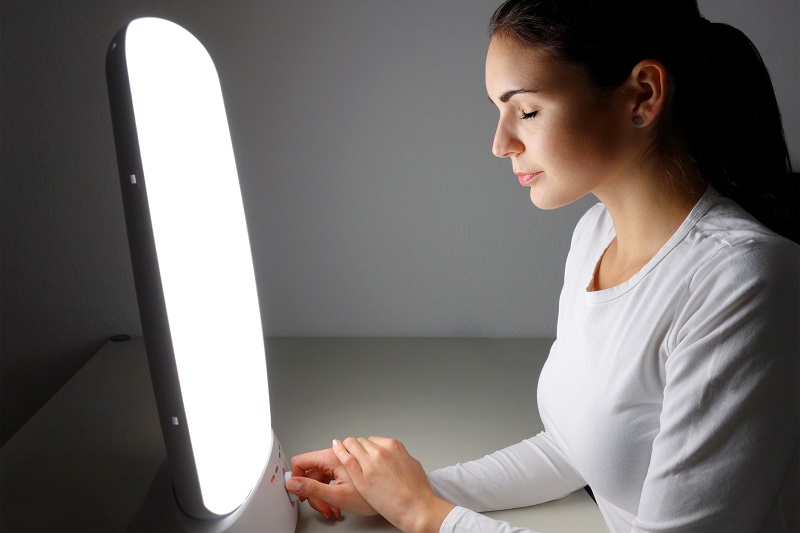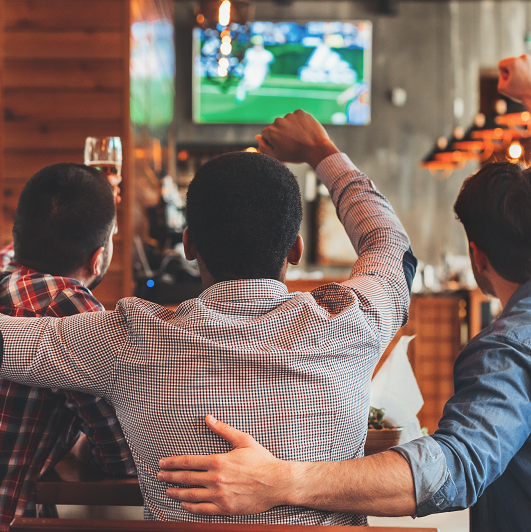Seasonal Affective Disorder and Light Therapy: Does it Work?

February 12, 2024
Ever feel like the winter months cast a shadow over your mood? You're not alone. Seasonal affective disorder (SAD) is a type of depression, sometimes referred to as “the winter blues.” It hits when the days get shorter, we spend less time outdoors due to colder weather, and the sun sets earlier. But SAD is more than just feeling a bit blah — it can seriously impact your energy, mood and overall well-being.
The American Psychiatric Association (APA) reports that SAD affects around 5 percent of Americans and lasts about 40 percent of the year. Symptoms vary, but they range from persistent sadness and fatigue to changes in sleep, appetite and mood.
Understanding SAD
Knowing that SAD affects millions of people each year, how do you know if you’re at risk? You may be more likely to experience SAD if you:
- Live in the north or northeast, where seasonal changes and winter are more pronounced than in southern climates.
- Have a history of depression or bipolar disorder
- Are a young adult or woman
- Have relatives with SAD or other forms of depression
- Experience changes in circadian rhythms and serotonin levels
In addition to feeling down and out, some of the most common symptoms of SAD include:
- Persistent feelings of sadness, hopelessness, or irritability
- Changes in sleep patterns, either trouble getting a good night’s sleep or sleeping more than usual
- Loss of motivation and interest in activities you once enjoyed
- Changes in appetite or weight, particularly craving carbohydrates
- Fatigue or low-energy
- Difficulty concentrating or making decisions
- Social withdrawal or increased sensitivity to rejection
- Unexplained aches and pains
Treatments for SAD: Light Therapy
Many people find relief through a combination of SAD treatments tailored to their specific needs. Experimenting with different approaches and working with your primary care provider or a mental health professional can help you determine the best course of action for managing any SAD symptoms.
The most common treatments for seasonal affective disorder are:
- Light therapy: Mimics natural sunlight and regulates mood. Best used in the morning for about 30 minutes.
- Medications: Antidepressants, particularly selective serotonin reuptake inhibitors (SSRIs) are often effective.
- Psychotherapy: Cognitive-behavioral therapy (CBT) and other forms of talk therapy can help address negative thought patterns and coping strategies.
- Lifestyle changes: Regular exercise, healthy eating, and maintaining a consistent sleep schedule can improve symptoms.
- Supplements: Some evidence suggests that vitamin D supplementation may benefit those with low levels.
- Mind-body practices: Yoga, meditation, and relaxation techniques can help reduce stress and improve mood.
- Social support: Engaging in social activities and maintaining relationships can provide emotional support.
One of the most popular treatment methods is light therapy, and for good reason. But many people wonder: Does it actually work?
“Light therapy is considered a short-term treatment for SAD,” says adult and pediatric psychiatrist, Eric Alcera, M.D. “When the light therapy is used, symptoms of SAD may diminish while in use, but they could come back during the next season when the number of hours of light begins to shorten again.”
Let There Be Light: How Light Therapy Works
Light therapy lamps mimic the natural sunlight that's in short supply during the darker months. By giving your brain a dose of sunshine, these lamps help regulate mood, sleep and appetite. Think of it as a mood-boosting pick-me-up to help you power through those gloomy days.
“Serotonin and melatonin levels affect mood and sleep respectively, and light therapy can modulate the levels of those chemicals," explains Dr. Alcera. "These are areas in the brain that are often negatively affected during shortened hours of light exposure."
Light therapy lamps are widely available online and start at very affordable prices. It is typically recommended that you sit in front of the lamp (usually put on a table) for about 20 - 30 minutes. A small investment of time for something that may improve your spirits and mood for the day. You can also put the time to good use by meditating or doing deep breathing relaxation exercises to start your day off on a positive note.
So, how can you make the most of your light therapy sessions? Follow these steps:
- Invest in a lamp that packs a punch — look for one with at least 10,000 lux of light and minimal UV rays.
- Sit in front of the light first thing in the morning, when you're feeling a bit bleary-eyed.
- Keep the light about an arm's length away from your face, but avoid staring directly into the light.
- Be consistent, and aim for around 30 minutes of exposure a day, but feel free to adjust this amount based on how you're feeling.
It’s important to note that while light therapy is a ray of sunshine for many, it's not without its shadows. Some people may experience irritability, headaches, or unusual sleep patterns. To avoid these pitfalls, steer clear of napping during your light sessions. And if you're not seeing any improvement after a couple of weeks, consider upping your exposure time or talking to your doctor.
"You can decrease the time spent using the light if symptoms are improving with treatment," says Dr. Alcera. "It's also OK to take a break and not use it daily if you're feeling better."
Is Light Therapy for SAD Right for You?
Not everyone is a candidate for light therapy. Those with preexisting eye conditions that make them sensitive to intense light should steer clear of these lamps. Also, if your symptoms extend beyond the realm of SAD — possibly indicating Major Depressive Disorder (MDD) — light therapy won’t help.
“SAD tends to be more of a lethargic depression, whereas MDD is more of an irritable depression," clarifies Dr. Alcera. "The difference is that SAD patients tend to oversleep and overeat, whereas MDD patients tend to have insomnia and have a loss of appetite."
When it comes to choosing the right light therapy lamp, there's no one-size-fits-all solution. If the light emits at least 10,000 lux and filters out UV rays, the brand and specific features are up to you. Whether you prefer sleek design, portability or adjustable brightness settings, there's a light therapy lamp out there for you.
If you find yourself feeling blue when the days grow shorter, consider letting a little light into your life — it might make all the difference.
Dr. Alcera adds, “And as this is truly a ‘seasonal’ condition, the spring and summer days may be just around the corner, and the light therapy lamp can go in the closet as you are outdoors again basking in the natural light.”
Next Steps & Resources
- Meet our source: Eric Alcera, M.D.
- To make an appointment with Dr. Alcera or another physician near you, call 800-822-8905 or visit our website.
The material provided through HealthU is intended to be used as general information only and should not replace the advice of your physician. Always consult your physician for individual care.






